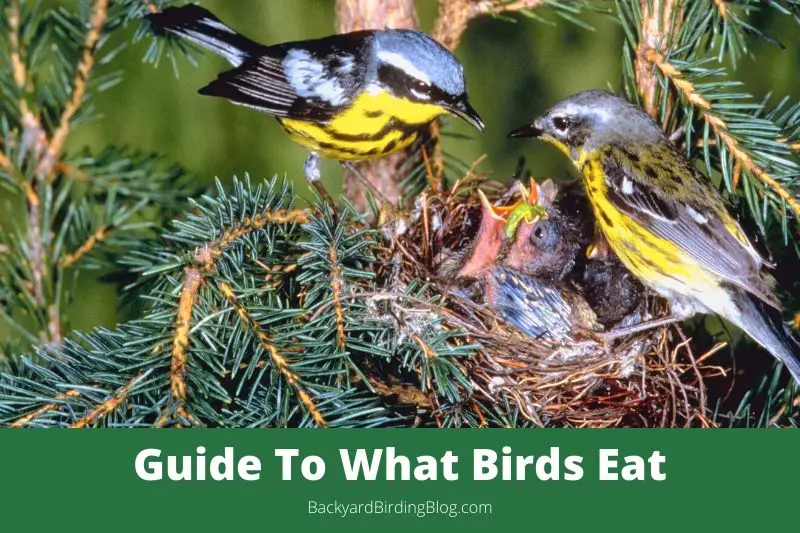
Knowing what different species of birds eat is important if you want to attract them to your yard or garden. They’re much more likely to be regular visitors if you put out their favorite food.
This article is going to provide you with a brief guide to what birds eat so you can attract the ones you really want.
A guide to what birds eat
Frugivorous birds
Frugivorous birds are primarily fruit eaters, often with specially adapted bills to aid them in cutting or removing the skin of the fruit. Examples of frugivorous birds are waxwings, orioles and hornbills. To attract these birds plant fruit trees and/or berry-producting shrubs, and put fruit in your feeders.
Granivorous birds
Granivorous birds eat seeds and grains, and some also eat insects. There are many species of granivorous birds, for example sparrows, finches, cardinals and pigeons. To attract these birds put different sorts of seeds in a variety of feeders, and plant seed-bearing flowers. For example, nuthatches like a mixture of millet and sunflower seeds, while cardinals enjoy mixtures with dried fruit such as cherries in them. Woodpeckers love peanuts, while small birds such as goldfinches prefer nyjer seed.
Insectivorous birds
As the name suggests, the primary diet of insectivorous birds is insects. Many birds that are given other classifications, e.g. frugivorous or granivorous, also eat insects. Mainly insectivorous bird species include warblers, swallows, flycatchers and swifts. To attract these birds, avoid the use of pesticides or insecticides in your garden, and put mealworm in your feeders.
Nectivorous birds
These birds feed on the nectar of flowers. Common examples of nectivorous bird species are hummingbirds, sunbirds and honeycreepers. To attract these birds to your yard or garden, plant nectar-bearing flowers and put nectar in your feeders. Also, avoid the use of pesticides and insecticides as many nectivorous birds also eat insects.
Other classifications
There are several other classifications of birds according to their diet, for example piscivorous birds primarily eat fish and molluscivorous birds mainly eat things such as snails and slugs, but the above classifications are the main ones to be concerned with when it comes to attracting birds to your yard or garden.
Summary
If you want to attract a wide variety of birds, the important things to bear in mind are:
- Avoid the use of insecticides and pesticides.
- Have fruit trees and berry-producing shrubs.
- Have nectar-producing flowers that have repeated blooming cycles, or plant a variety of such flowers that have staggered blooming stages so that there is always a readily-available supply of nectar.
- Have a variety of different kinds of feeders, for example hanging feeders and trays, and use a variety of different types of food. For example, nectar for nectivorous birds, mealworm for insectivorous birds, sunflower and other seeds for granivorous species and fruit for frugivorous bird species.
In short, as common sense would dictate, provide as many different food sources as possible to attract the widest variety of bird species to your yard or garden.
Here is a quick reference of various food types and the species of birds they attract:
- Safflower – Blue Jay, White Breasted Nuthatch, House Finch.
- Peanuts – Blue Jay, Brown Thrasher, Pigeon, Red Winged Blackbird, Cardinal, Brown Headed Cowbird, Nuthatch, Quail, Dove, Creeper, Towhee, Junco.
- Cracked Corn – Red Winged Blackbird, Blue Jay, Titmouse, White Breasted Nuthatch, Magpie, Black Capped Chickadee, Junco, Towhee, Cardinal, Indigo Bunting.
- Suet – Blue Jay, Wren, Finch, Warbler, Tanager, Red Winged Blackbird, Pine Siskin, Red Poll, Crow, Magpie, Northern Flicker, Robin, Thrush, Bluebird, Woodpecker, Grosbeak, Titmouse, Bunting, Nuthatch.
If this guide to what birds eat has sparked your interest and you want more information about the different sorts of bird seed and food and which kinds are best to feed the birds, see our guide to wild bird seed and food.
